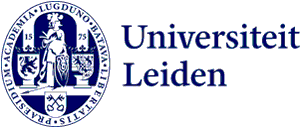
Targeting the immune system to inhibit atherosclerosis
A new treatment for atherosclerosis showed promising results in isolated cells but proved to be less effective in initial animal tests. Bachelor student Biopharmaceutical Sciences Willemijn van der Heijden aimed to understand why. She investigated whether the formation of a protein layer around the medication particles might be the cause. ‘Hopefully, through this research, we can enhance the effectiveness of this medication.’
‘Currently, treatments for atherosclerosis primarily focus on combating symptoms,’ says Willemijn. ‘These symptoms include high blood pressure, elevated cholesterol levels, and thrombosis. This new treatment, however, targets the underlying mechanisms.’

Immune cells in check through nanoparticles
Willemijn investigated a treatment that targets the immune system. ‘Because the immune system plays a crucial role in the disease process,’ she explains. ‘The medication consists of tiny nanoparticles capable of initiating “immune tolerance”. This means that immune cells become less responsive to the lipid particles in your blood (see box). By doing so, you reduce chronic inflammation and inhibit the progression of atherosclerosis.’
What about atherosclerosis?
Atherosclerosis, or arterial calcification, is an underlying cause of cardiovascular diseases. Plaques, accumulations of fat particles (lipids), form along the arterial walls, often in coronary arteries that supply oxygen to the heart. These plaques narrow the blood vessels, potentially leading to complete blockages.
Protein layer as a disruptor
Although the initial laboratory test results were positive, unfortunately, this was not reflected in the early animal trials. Willemijn explains: ‘This is likely due to the protein corona: a layer of proteins that forms around the nanoparticle upon contact with bodily fluids, such as blood. Through my research, I attempted to determine precisely how the protein corona influences the effectiveness of the nanoparticles to explain the differences between the cell experiments and the animal trials.’
From disruptor to enhancer
Willemijn discovered that the protein corona influences the properties of nanoparticles, such as size and charge, as well as the uptake of these nanoparticles by immune cells. ‘Additionally, we explored whether we could actually leverage the protein corona to make the drug more effective.’
In the end, Willemijn identified two proteins that significantly improve the uptake of nanoparticles by the immune system. ‘With these proteins, researchers can potentially optimise the protein corona in the future by ensuring that they get into that corona. This way, we can further improve the medication, ultimately achieving the desired effect in animals and humans.’
From bachelor to master: same topic, new location
For Willemijn, conducting her own research was one of the highlights of her bachelor’s studies. ‘I didn’t expect to have so much freedom, such as making suggestions for additional experiments.’
‘I didn’t expect to have so much freedom!’
She has now embarked on the master’s programme in Regenerative Medicine and Technology at Utrecht University. ‘My bachelor’s research inspired me to delve deeper into the interactions between the protein corona and nanoparticles. For my master’s internship, I chose to focus on researching the development of nanoparticles as a treatment for chronic back pain in both dogs and humans. I want to examine the influence of the protein corona on the effectiveness of this potential new treatment. It’s great that I can build upon the knowledge I gained during my bachelor’s project in Leiden!’
